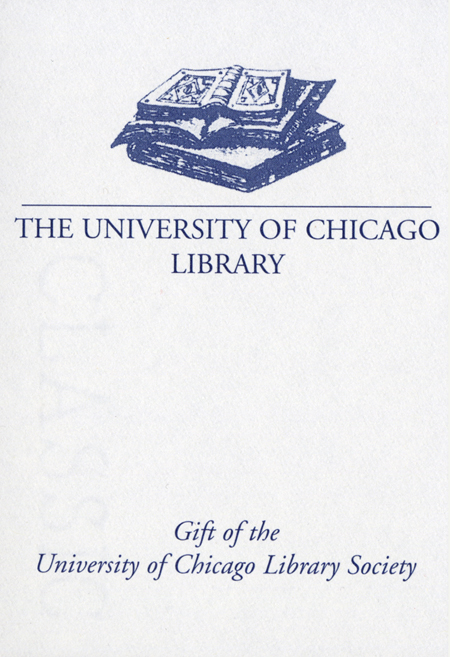Molecular plant immunity /
Saved in:
| Imprint: | Ames, Iowa : Wiley-Blackwell, 2013. |
|---|---|
| Description: | 1 online resource. |
| Language: | English |
| Subject: | |
| Format: | E-Resource Book |
| URL for this record: | http://pi.lib.uchicago.edu/1001/cat/bib/9143464 |
Table of Contents:
- 1. The rice Xa21 immune receptor recognizes a novel bacterial quorum sensing factor / Cheng Jin Park and Pamela C. Ronald
- Introduction
- Plants and animal immune systems
- A plethora of immune receptors recognize conserved microbial signatures
- Ax21 conserved molecular signature
- Non-RD receptor kinase Xa21
- XA21-mediated signaling components
- Cleavage and nuclear localization of the rice XA21 immune receptor
- Regulation in the endoplasmic reticulum: quality control of XA21
- Systems biology of the innate immune response
- 2. Molecular basis of effector recognition by plant NB-LRR proteins / Lisong Ma, Harrold A. van den Burg, Ben J.C. Cornelissen and Frank L.W. Takken
- Introduction
- Building blocks of NB-LRRs: classification and structural features of subdomains
- Putting the parts together: combining the domains to build a signaling competent NB-LRR protein
- Stabilization and accumulation of NB-LRR proteins: their maturation and stabilization
- When the pathogen attacks: perception and signaling by NB-LRR proteins
- Conclusion
- 3. Signal transduction pathways activated by R proteins / Gitta Coaker and Douglas Baker
- Introduction
- R protein stability
- Genetic separation of CC and TIR-NB-LRR signaling
- NB-LRRs exhibit modular structure and function
- Subcellular localization of NB-LRRs
- NB-LRRs can function in pairs
- Common immune signaling events downstream of R protein activation
- Conclusion
- 4. The roles of salicylic acid and jasmonic acid in plant immunity / Pradeep Kachroo and Aardra Kachroo
- Introduction
- Biosynthesis of SA
- Derivatives of SA
- SA and systemic acquired resistance
- SA signaling pathway
- Jasmonates mediate plant immunity
- JA biosynthetic mutants are altered in microbial defense
- Receptor protein complex perceives JA
- Transcription factors regulate JA-derived signaling
- JA regulates defense gene expression
- Conclusion
- 5. Effectors of bacterial pathogens: modes of action and plant targets / Feng Feng and Jian-Min Zhou
- Introduction
- Overview of plant innate immunity
- Overview of type III effectors
- Host targets and biochemical functions
- Conclusion
- 6. The roles of transcription activator-like (TAL) effectors in virulence and avirulence of Xanthomonas / Aaron W. Hummel and Adam J. Bogdanove
- Introduction
- TAL effectors are delivered into and may dimerize in the host cell
- TAL effectors function in the plant cell nucleus
- AvrBs4 is recognized in the plant cell cytoplasm
- TAL effectors activate host gene expression
- Central repeat region of TAL effectors determines DNA binding specificity
- TAL effectors wrap around DNA in a right-handed superhelix
- TAL effector targets include different susceptibility and candidate susceptibility genes
- MtN3 gene family is targeted by multiple TAL effectors
- Promoter polymorphisms prevent S gene activation to provide disease resistance
- Nature of the rice bacterial blight resistance gene xa5 suggests TAL effector interaction with plant transcriptional machinery
- Executor R genes exploit TAL effector activity for resistance
- Diversity of TAL effectors in Xanthomonas populations is largely unexplored
- TAL effectors are useful tools for DNA targeting
- Conclusion
- 7. Effectors of fungi and oomycetes: their virulence and avirulence functions, and translocation from pathogen to host cells / Brett M. Tyler and Thierry Rouxel
- Introduction
- Plant-associated fungi and oomycetes
- Identification of fungal and oomycete effectors
- Defensive effectors: effectors that interfere with plant immunity
- Offensive effectors: effectors that debilitate plant tissue
- Effectors that contribute to fitness via unknown mechanisms
- Entry of intracellular effectors
- Genome location and consequences for adaptation/dispensability
- Conclusion
- 8. Plant-virus interaction: defense and counter-defense / Amy Wahba Foreman, Gail J. Pruss and Vicki Vance
- Introduction
- RNA silencing as an antiviral defense pathway: the beginning of the story
- Small regulatory RNA biogenesis and function
- The silencing mafia: the protein families
- Defense: anti-viral RNA silencing pathways
- Counter-defense: viral suppressors of silencing and their targets
- Viral suppressors of silencing and endogenous small regulatory RNA pathways
- 9. Molecular mechanisms involved in the interaction between tomato and Pseudomonas syringae pv. tomato / André C. Velásquez and Gregory B. Martin
- Introduction
- PAMP-triggered immunity in Solanaceae
- Pseudomonas syringae pv. tomato virulence mechanisms
- Effector-triggered immunity in Solanaceae
- Races of Pseudomonas syringae pv. tomato
- ETI is involved in non-host resistance to Pseudomonas syringae pathovars
- ETI signaling pathways in the Solanaceae
- Conclusion
- 10. Cladosporium fulvum-tomato pathosystem: fungal infection strategy and plant responses / Bilal Ökmen and Pierre J.G.M. de Wit
- Introduction
- History of the interaction between C. fulvum and tomato
- Compatible and incompatible interactions
- Cf-mediated downstream signaling
- Effectors in other fungi with similar infection strategies
- Conclusion
- 11. Cucumber mosaic virus-Arabidopsis interaction: Interplay of virulence strategies and plant responses / Jack H. Westwood and John P. Carr
- Introduction
- Biology of CMV
- Host resistance responses to virus infection
- Targeting of host factors by the virus
- Phenomenon of cross-protection
- Functions of SA in antiviral defense
- Metabolic responses to CMV infection
- Vector-mediated transmission
- Conclusion
- 12. Future prospects for genetically engineering disease-resistant plants / Yan-Jun Chen, Michael F. Lyngkjær and David B. Collinge
- Introduction
- Targets for second generation transgenic strategies for resistance
- Hormones
- Defense modulation
- Transcription factors
- Promoters for transgenic disease resistance
- Implementation of transgenic resistance in the field
- Why choose a transgenic approach?
- Conclusion.

